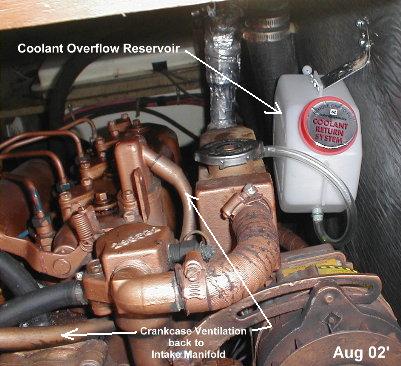Page created February 10, 2003
This page was last updated: January 4, 2017
The
Coolant Recovery Reservoir
requires a good pressure cap.
That is, the cap must have two sealing surfaces. One to the outside air at the top of the cap, and the second at the entrance to the engine. When the pressure exceeds 14 psi the fluid flows into the cavity just below the top of the cap and subsequently into the little ¼" tube that is connected to the Recovery Reservoir.
When the coolant in the engine cools it will contract and the air in the tank will go to a much lower pressure. The pressure cap must then allow coolant to flow through a check valve in the center of the cap, essentially sucking coolant out of the recovery reservoir and back into the engine.
So the cap must let coolant out when the pressure is high in the engine and suck it back in when the pressure is low in the engine.
To see an animated diagram of how the pressure cap works.
Do not confuse coolant recovery reservoirs with auxiliary expansion tanks. Below is a little cross section of a radiator pressure cap showing that the seal at the top is critical to being able to draw fluid back into the radiator from the coolant recovery tank.

The expansion tank may not really be required. Consider raising the coolant recovery reservoir about six inches higher than the water heater and filling it with coolant. The coolant will force its way to the heater after an opening is provided at a high point that will let the air out. A petcock at the heater can be left open till the coolant starts to come out of it. This assumes a perfectly good pressure cap that needs very little reverse pressure to let coolant go into the engine.
Click image to see video
